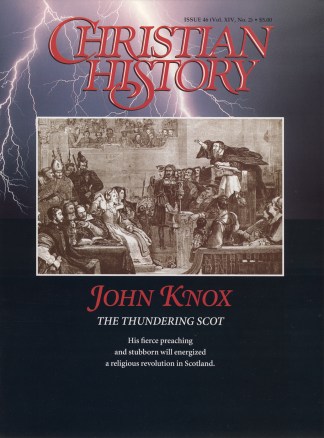In the early 1500s, Scotland was a poor, primitive country, which Europe thought barbaric—a land ending in a great field of stone and ice, where the sun shone only four hours a day in winter. One Scot said he lived in a land “almost beyond the limits of the human race.” Yet Scotland’s central cities, though small, played key roles in one of the sixteenth century’s most far-reaching reformations.
Haddington
Home-sweet-home
The place of Knox’s birth and youth, located about 15 miles from Edinburgh, had a population of 1,500—though a century earlier, it had been Scotland’s largest city.
After his university education at St. Andrews and ordination to the priesthood, Knox returned here to become a notary and a tutor for children of local nobility.
Dundee
“Scottish Geneva”
So-named because it was an early center of the Reformation movement. Knox visited the city of 2,000 many times and had regular contact with Protestants there.
The only remaining part of the old city walls is a section upon which Protestant radical George Wishart once preached, during a plague in 1544.
St. Andrews
Bathed in blood
The seat of Scotland’s highest church official, where Protestants Patrick Hamilton (1525) and George Wishart (1546) were martyred—and where Archbishop Beaton was murdered in revenge. The conspirators holed up in the castle, which was immediately put under siege. Knox, who joined the coup in the midst of the siege, received his call to preach here.
Perth
Impatient with Catholicism
A Protestant stronghold with some 2,000 inhabitants is about 35 miles from Edinburgh and 20 miles from Dundee. When Knox returned from his European exile in 1559, he preached an impassioned sermon here—after which the town rioted, destroying Catholic altars, images, and monasteries.
Edinburgh
Reform central
This small capital (population 15,000—London had 60,000 and Paris, 200,000) had two royal residences: the impressive hill-castle and Holyroodhouse Palace, favorite of Mary Queen of Scots, Knox’s nemesis. Parliament enacted the Scottish Reformation (1560) here, and Knox pastored at St. Giles’s Cathedral, where he was buried in 1572.
Copyright © 1995 by the author or Christianity Today/Christian History magazine. Click here for reprint information on Christian History.










